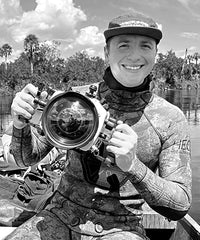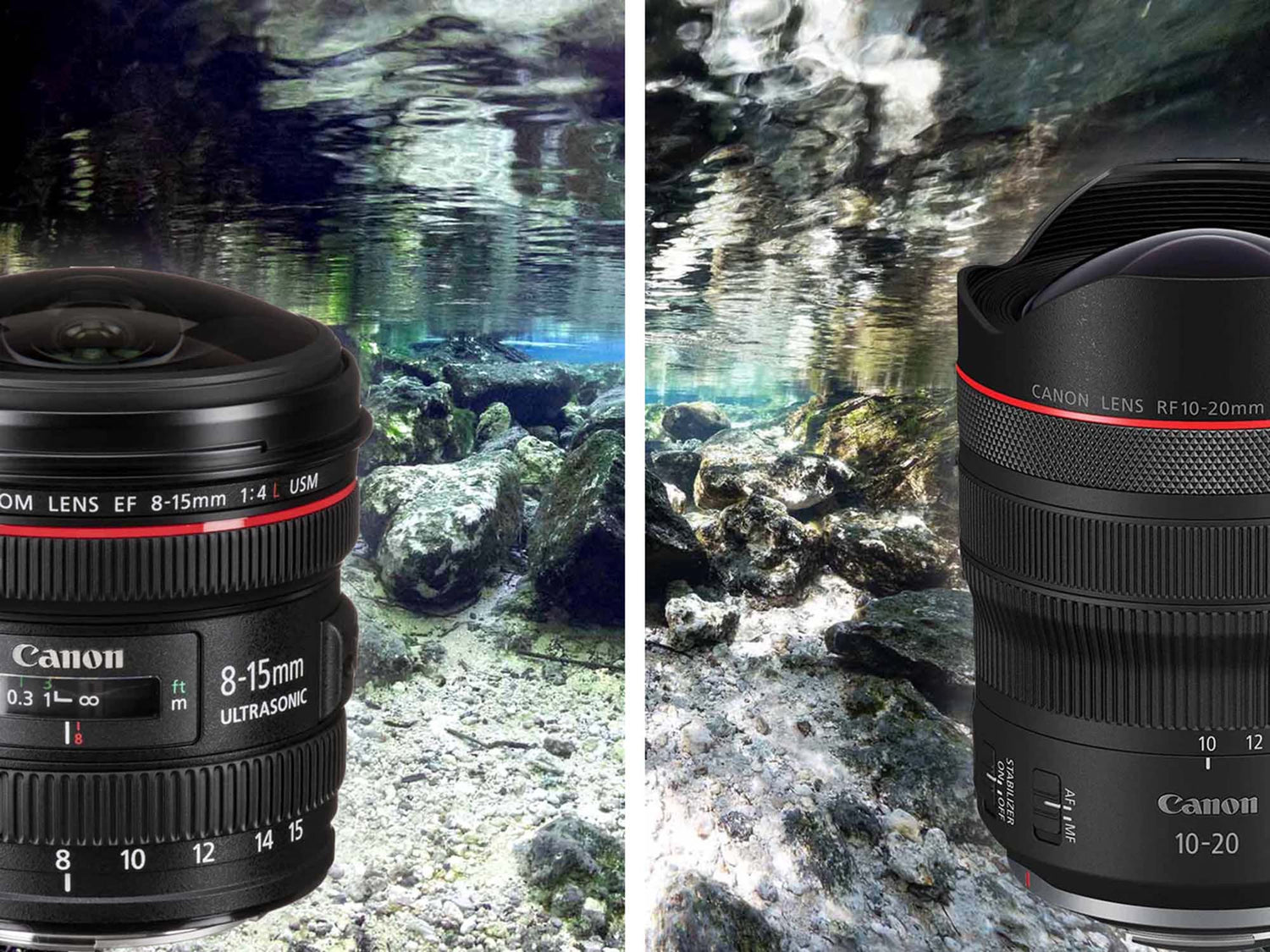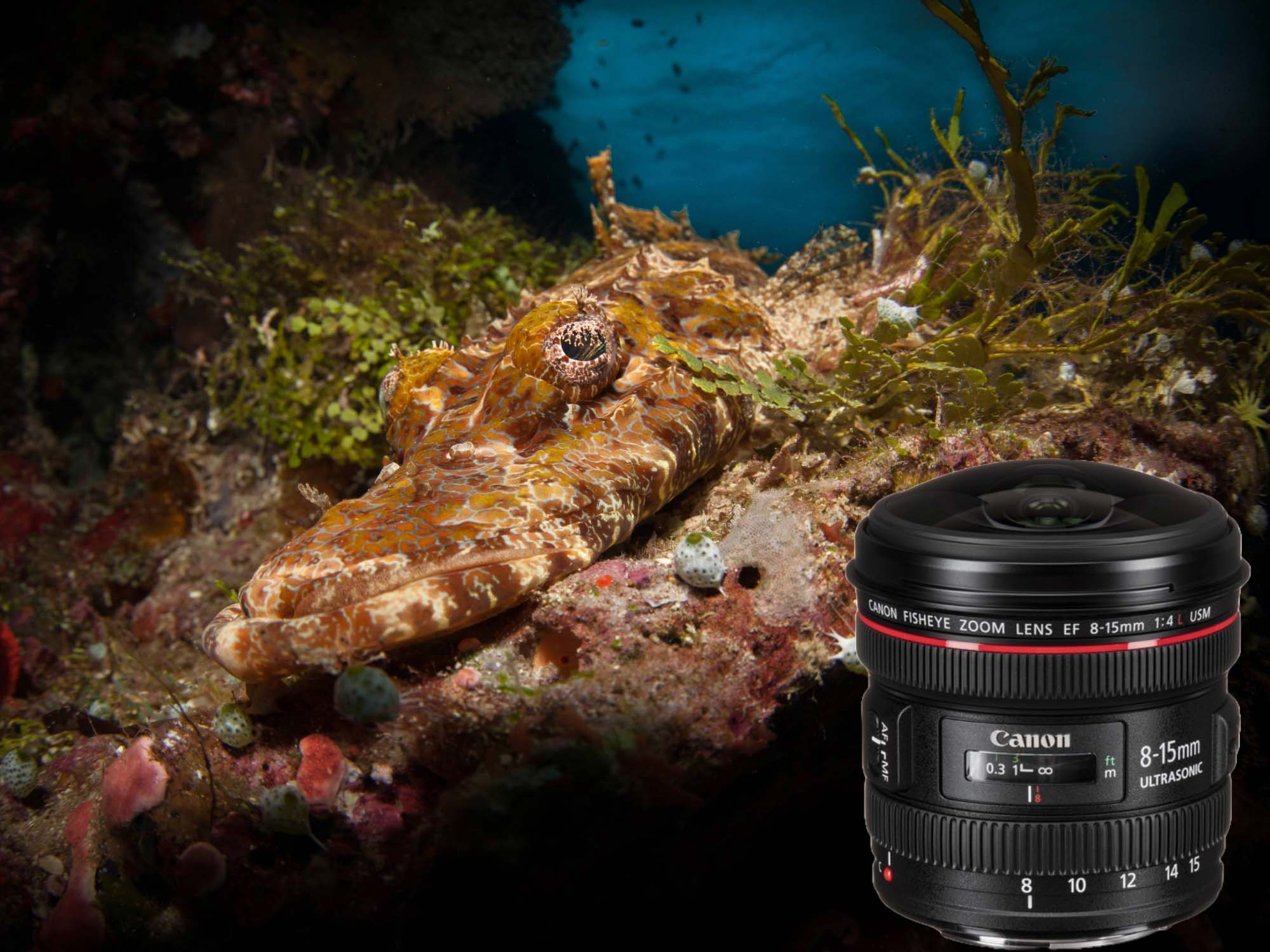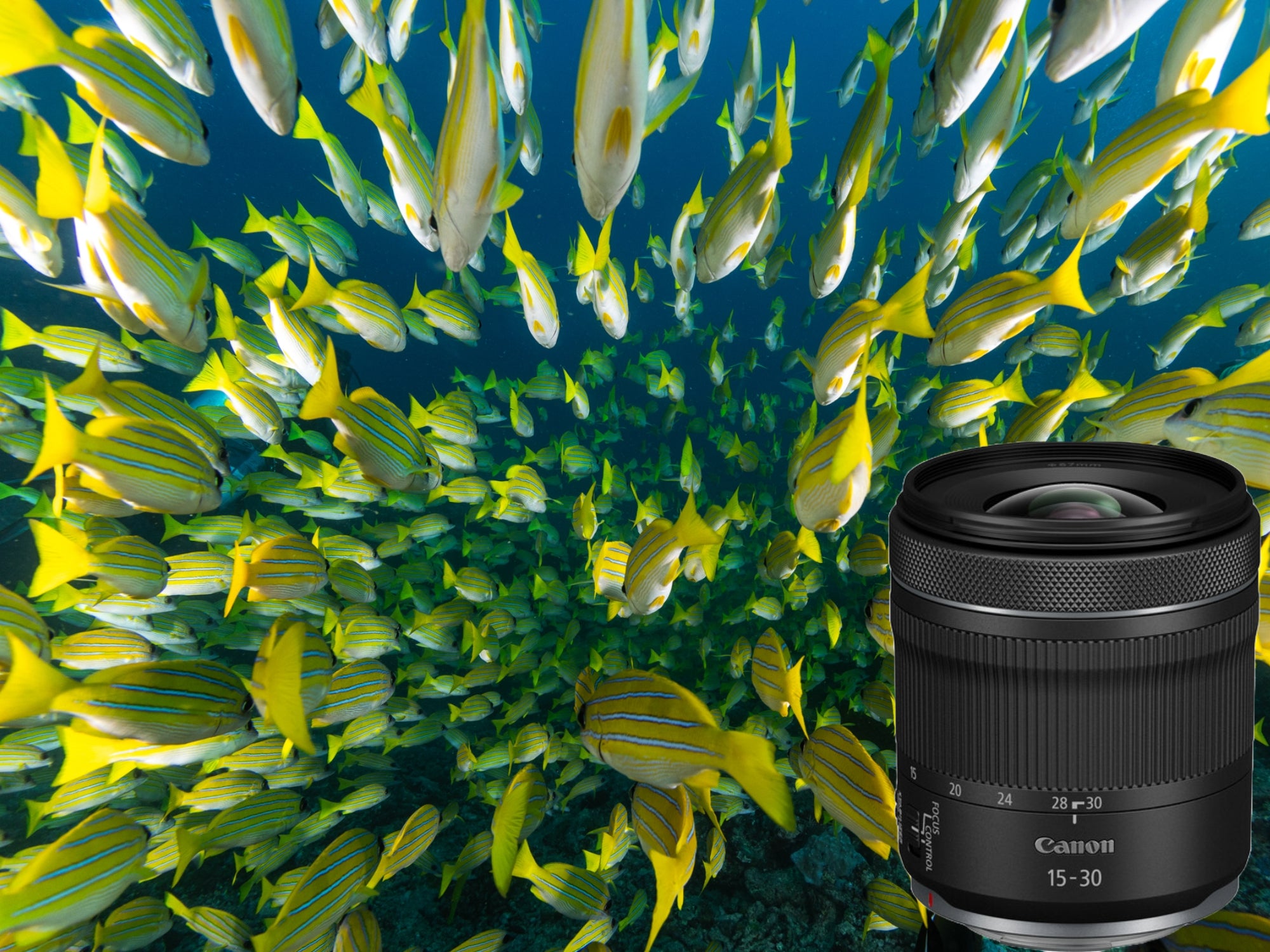Text By Jean Rydberg
Photos by Bill Hawthorne
Ultra-wide lenses are critical in underwater photography for getting close to your subject. Reducing the amount of water in front of our lens has a dramatic impact on color and clarity in the resulting images.
Fisheye lenses are by far the most popular choice for wide angle underwater photographers due to their exceptional sharpness behind a dome port. But one thing surface photographers fear when picking up a fisheye is distortion. We’ve seen the fisheye images of buildings where skyscrapers have scoliosis. You may be surprised that the distortion isn’t as bad as you think it will be… and that it just may look more natural than a rectilinear lens underwater!
Ambassador Bill Hawthorne set up an underwater scene in the Florida Springs to compare two of the best ultra-wide lenses on the market today: the Canon EF 8-15mm f/4L Fisheye and the rectilinear Canon RF 10-20mm f/4L IS STM. You may be surprised by the results!
Scroll down for image comparisons at both large and small apertures.
READ MORE: Bill Hawthorne's full review of the Canon RF 10-20mm f/4L IS STM
READ MORE: Our review of the Canon EF 8-15mm f/4L Fisheye
f/4

f/4 • Canon EF 8-15mm Fisheye with Mount Adapter EF-EOS R

f/4 • Canon RF 10-20mm

f/4 • Side-by-side

f/4 Detail • Canon EF 8-15mm Fisheye with Mount Adapter EF-EOS R

f/4 Detail • Canon RF 10-20mm
f/5.6

f/5.6 • Canon EF 8-15mm Fisheye with Mount Adapter EF-EOS R

f/5.6 • Canon RF 10-20mm

f/5.6 • Side-by-side

f/5.6 Detail • Canon EF 8-15mm Fisheye with Mount Adapter EF-EOS R

f/5.6 Detail • Canon RF 10-20mm
f/11

f/11 • Canon EF 8-15mm Fisheye with Mount Adapter EF-EOS R

f/11 • Canon RF 10-20mm

f/11 • Side-by-side

f/11 Detail • Canon EF 8-15mm Fisheye with Mount Adapter EF-EOS R

f/11 Detail • Canon RF 10-20mm
f/22

f/22 • Canon EF 8-15mm Fisheye with Mount Adapter EF-EOS R

f/22 • Canon RF 10-20mm

f/22 • Side-by-side

f/22 Detail • Canon EF 8-15mm Fisheye with Mount Adapter EF-EOS R

f/22 Detail • Canon RF 10-20mm
Conclusions
So which do you prefer? The classic EF 8-15mm still wins in our book in terms of angle of coverage, edge sharpness, and - incredibly - less apparent distortion around the edges of the frame. The inventor of the term “fisheye lens” was making a lens that could capture “how a fish sees,” so perhaps we shouldn’t be surprised that they can actually deliver a more natural look underwater depending on the scene and subject matter.
Thinking of trying a fisheye lens? Get 'em while they last!
 Jean Rydberg is the President & CEO of Ikelite. She has lived her whole life in landlocked Indianapolis, Indiana, but is no stranger to the water as a daughter of Ikelite’s founder Ike Brigham. She has traveled around the world shooting and testing gear and enjoys new challenges in both photography and diving. Jean loves to learn about the creative ways photographers achieve their visions. More than anything she wants to show aspiring underwater photographers that excellence is attainable with any system. When she's not working she's spending time with her husband and two daughters.
Jean Rydberg is the President & CEO of Ikelite. She has lived her whole life in landlocked Indianapolis, Indiana, but is no stranger to the water as a daughter of Ikelite’s founder Ike Brigham. She has traveled around the world shooting and testing gear and enjoys new challenges in both photography and diving. Jean loves to learn about the creative ways photographers achieve their visions. More than anything she wants to show aspiring underwater photographers that excellence is attainable with any system. When she's not working she's spending time with her husband and two daughters.

Bill Hawthorne is an aquatic ecologist specializing in the study of the freshwater springs of Florida. Bill focuses his studies and photography on freshwater species, most notably turtles. By sharing his underwater images, Bill hopes he'll expand his viewers' passion toward these unique environments and animals. Check out more of his work on his website, Instagram @billhawthornephotography, TikTok, and YouTube.
Additional Viewing
Rectilinear vs Fisheye Lenses for Underwater Wide Angle Photography [VIDEO]
Why You Need a Fisheye Lens Underwater
GET the Canon 8-15mm Fisheye Before It's GONE! // Underwater Review & Results
Underwater Exposure Explained | Aperture Settings [VIDEO]
What Secrets Lurk Underwater in the Florida Springs at Night?













